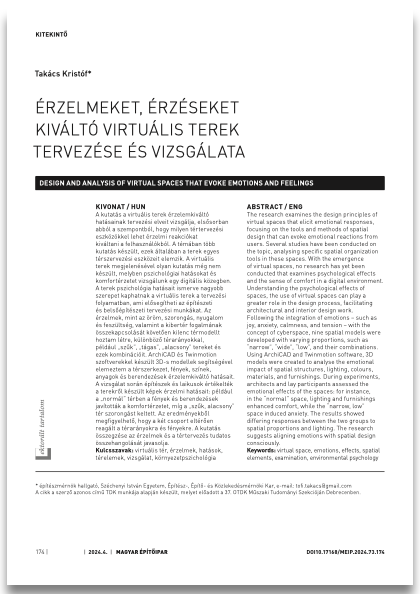DESIGN AND ANALYSIS OF VIRTUAL SPACES THAT EVOKE EMOTIONS AND FEELINGS
DOI:
https://doi.org/10.17168/Keywords:
virtual space, emotions, effects, spatial elements, examination, environmental psychologyAbstract
The research examines the design principles of virtual spaces that elicit emotional responses, focusing on the tools and methods of spatial design that can evoke emotional reactions from users. Several studies have been conducted on the topic, analysing specific spatial organization tools in these spaces. With the emergence of virtual spaces, no research has yet been conducted that examines psychological effects and the sense of comfort in a digital environment. Understanding the psychological effects of spaces, the use of virtual spaces can play a greater role in the design process, facilitating architectural and interior design work. Following the integration of emotions – such as joy, anxiety, calmness, and tension – with the concept of cyberspace, nine spatial models were developed with varying proportions, such as “narrow”, “wide”, “low”, and their combinations. Using ArchiCAD and Twinmotion software, 3D models were created to analyse the emotional impact of spatial structures, lighting, colours, materials, and furnishings. During experiments, architects and lay participants assessed the emotional effects of the spaces: for instance, in the “normal” space, lighting and furnishings enhanced comfort, while the “narrow, low” space induced anxiety. The results showed differing responses between the two groups to spatial proportions and lighting. The research suggests aligning emotions with spatial design consciously.


